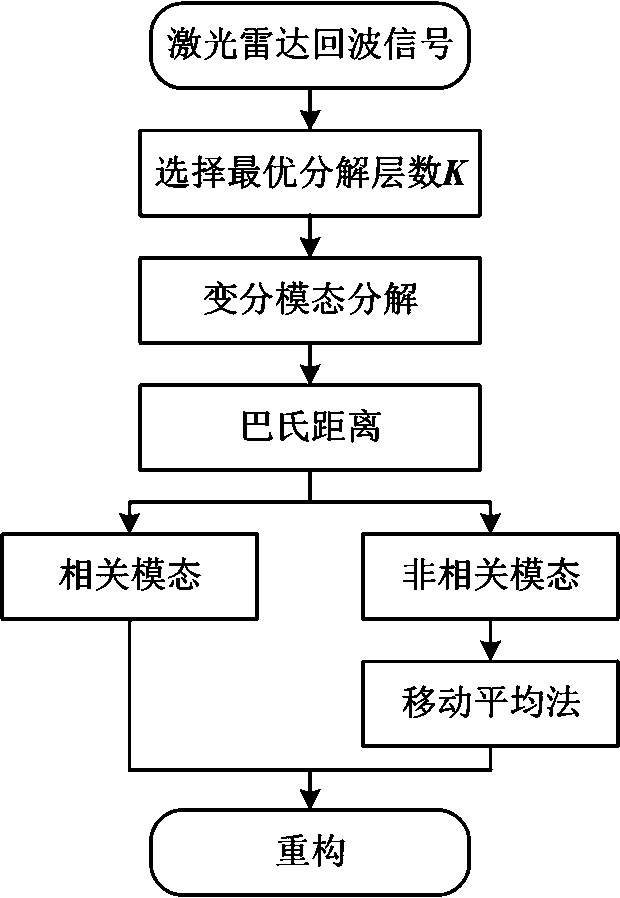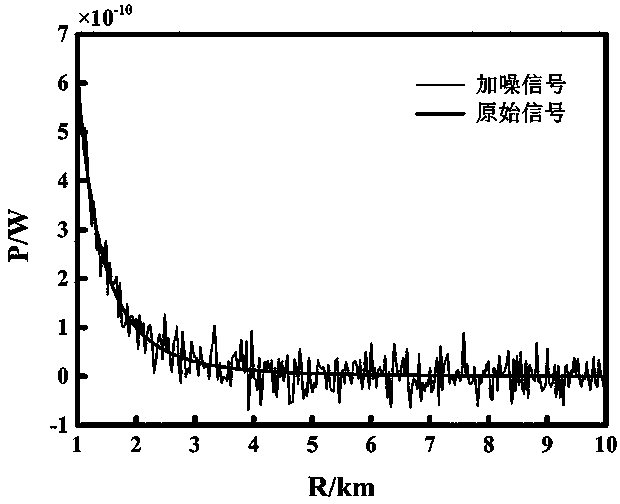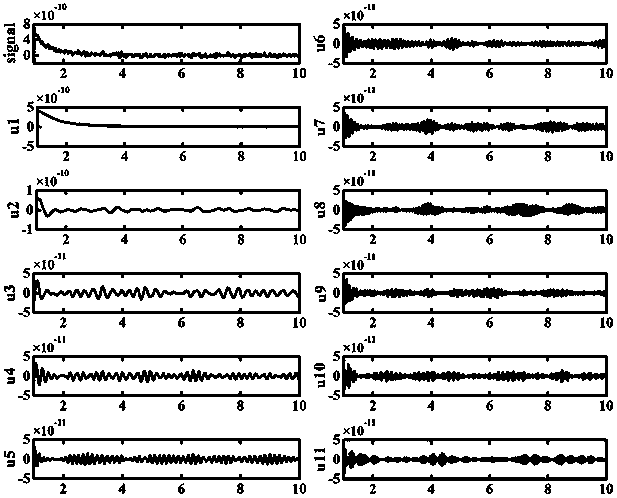Laser radar echo signal de-noising method based on variational mode decomposition
A variational modal decomposition, lidar technology, applied in radio wave measurement systems, instruments, etc., can solve the problems of errors, inability to separate useful signals from noise, poor adaptability, etc., to filter out noise, avoid adverse effects, Guaranteed effect of integrity
- Summary
- Abstract
- Description
- Claims
- Application Information
AI Technical Summary
Problems solved by technology
Method used
Image
Examples
Embodiment
[0037] The denoising method of lidar echo signal based on variational mode decomposition in this embodiment, such as figure 1 shown, including the following steps:
[0038] Step 1: According to the laser radar equation, simulate the laser radar echo signal;
[0039] The lidar equation is:
[0040]
[0041] Among them, P(r) is the detected echo power; c is the speed of light; r is the detection distance; E 0 is the emitted laser pulse energy; Y(r) is the lidar geometric overlap factor; A r is the receiving area of the telescope; β(r) is the backscattering coefficient of the target at r; T(r) is the atmospheric transmittance; T t T r is the total transmittance of the transmitting and receiving optical system.
[0042] Step 2: Use detrended fluctuation analysis to select the optimal decomposition level K of variational mode decomposition;
[0043] Using detrended fluctuation analysis to obtain the scale index of the lidar echo signal and the scale index of each modal c...
PUM
 Login to View More
Login to View More Abstract
Description
Claims
Application Information
 Login to View More
Login to View More - R&D
- Intellectual Property
- Life Sciences
- Materials
- Tech Scout
- Unparalleled Data Quality
- Higher Quality Content
- 60% Fewer Hallucinations
Browse by: Latest US Patents, China's latest patents, Technical Efficacy Thesaurus, Application Domain, Technology Topic, Popular Technical Reports.
© 2025 PatSnap. All rights reserved.Legal|Privacy policy|Modern Slavery Act Transparency Statement|Sitemap|About US| Contact US: help@patsnap.com



